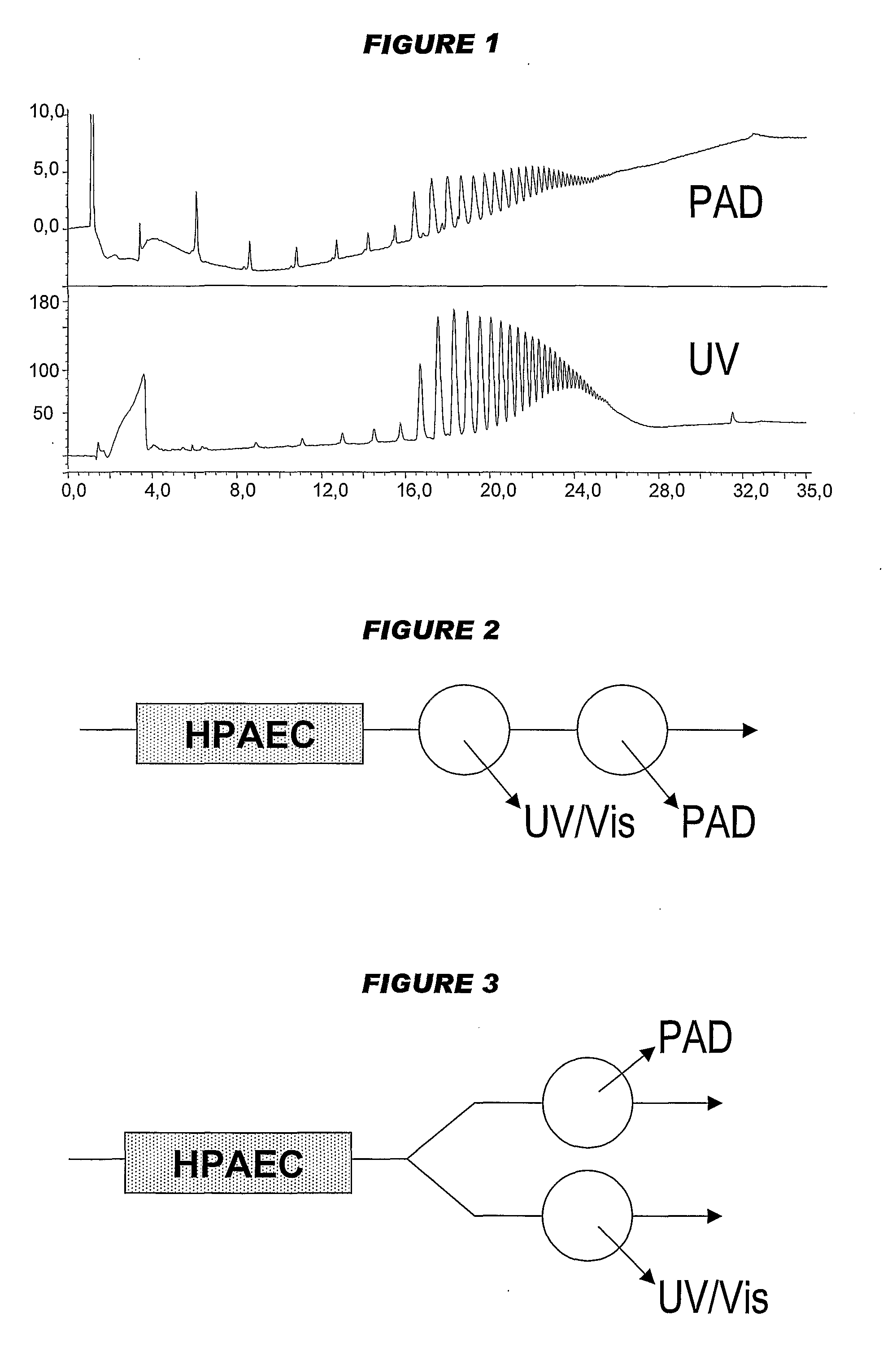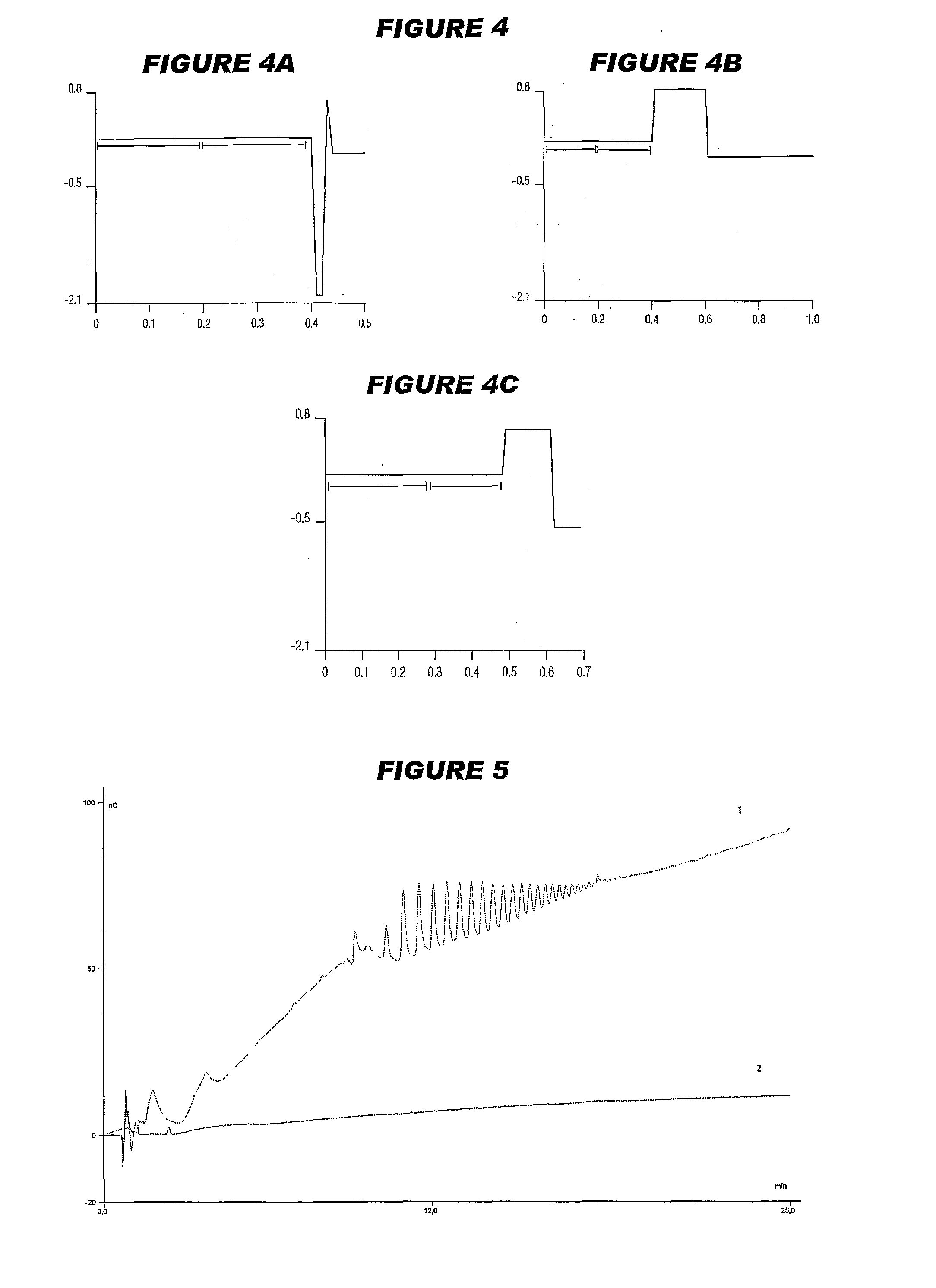Analysis of Liquid Chromatography Eluates
a liquid chromatography and eluate technology, applied in the field of saccharide analysis, to achieve the effect of improving the resolution of long oligosaccharides and avoiding oxidative damag
- Summary
- Abstract
- Description
- Claims
- Application Information
AI Technical Summary
Benefits of technology
Problems solved by technology
Method used
Image
Examples
Embodiment Construction
Ultraviolet Detection of HPAEC Output
[0073]The high pH used during HPAEC analysis of capsular saccharides means that hydroxide ions are present in the eluate, but these ions have high absorbance in the ultraviolet region. As shown in FIG. 19, the use of a standard acetate / hydroxide eluent with just water on a CarboPac PA1 column gives an elution profile in the UV region that will obscure any analyte(s) of interest. In order to add UV detection to analysis of HPAEC eluents, therefore, a different strategy was required.
Combined PAD and UV Analysis of HPAEC Eluent
[0074]The capsular saccharide of serogroup A meningococcus was subjected to depolymerisation, to give a pool of charged (phosphate, from mannosamine-1-phosphate monomers) saccharides of mixed length (high DP). Rather than using a PA1 column for HPAEC separation, the mixture was separated on a Dionex IonPac AS11 column with the manufacturer's suggested guard, using a sodium hydroxide gradient as the eluent (flow rate 1.0 ml / min...
PUM
 Login to View More
Login to View More Abstract
Description
Claims
Application Information
 Login to View More
Login to View More - R&D
- Intellectual Property
- Life Sciences
- Materials
- Tech Scout
- Unparalleled Data Quality
- Higher Quality Content
- 60% Fewer Hallucinations
Browse by: Latest US Patents, China's latest patents, Technical Efficacy Thesaurus, Application Domain, Technology Topic, Popular Technical Reports.
© 2025 PatSnap. All rights reserved.Legal|Privacy policy|Modern Slavery Act Transparency Statement|Sitemap|About US| Contact US: help@patsnap.com



